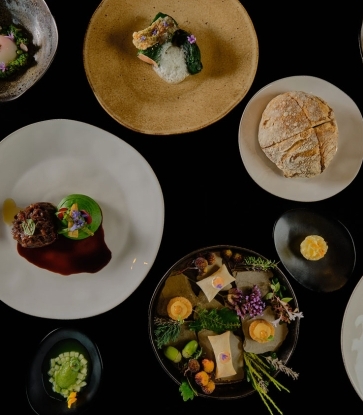Imagine how vastly different Mediterranean cuisine would be without olives. From the beginning of Western civilization, the oblong fruit is omnipresent in Italy, Spain and countries beyond. Its significance is noted even in Greek mythology, when Athena sent olive trees to the citizens of Athens as a wish for abundance and peace.
Today, olives are one of the world's most extensively cultivated crops. In 2011, as much as 9.6 million hectares of farmland was dedicated to this fruit, most of which were centered around Mediterranean countries, including Spain, Italy, Greece and Turkey. Given its many culinary applications, coupled with the fact that the trees that can literally live up to hundreds—if not thousands—of years old, it's little wonder why.

But despite its utility, a fresh olive is surprisingly bitter due to its phenolic compounds. This is where curing comes in: ancient mankind figured out that preserving the fruit reduces the bitterness and makes it far more palatable.
The technique to cure olives was said to have originated in Ancient Roman times and later developed into a kaleidoscope of styles. Besides removing the bitter compounds, the olives maintain their bright color and mellows into appetizing sweet and sour notes.
More often than not, different dishes call for specific kinds of olives. The choice of curing method plays a big part in giving distinctive characteristics. While there are more complexities to how each variety is made, the curing process can be generally divided into three main categories:
Brine Curing
This method usually involves steeping black or dark purple olives in salted water, sometimes for an extended period, for a deeper flavor. It’s one of the more traditional treatments, with the brine extracting the fruit’s natural sweetness. The Chardonnay jalapeño olive is a notable recent spin-off; the addition of Chardonnay to the brine gives the chile-stuffed olives a crisp acidity.
Water Curing
Water-cured olives are scored then soaked in a bowl filled with cold water; the process verges on the lengthy end and requires patience to replace the water every day. Because they are mild in taste, the olives take on seasonings such as chile, garlic and vinegar.

Dry Curing
Dry-cured olives are rubbed with salt and air-dried for a month to remove moisture and bitterness. The olives are then placed in olive oil to take off excess salt and soften. Among the olives prepared in different curing techniques, the dry-cured ones have the strongest taste and a rough skin that makes them immediately recognizable.
These three fundamental curing techniques are used on various types of olives. Below are some of the most prominent varieties:
Kalamata
Born in the eponymous city in Southern Greece, Kalamata olives sport a gorgeous lilac hue and boast a rich flavor even when freshly-picked. Therefore, they produce premium olive oil. The cured fruits are usually immersed in wine vinegar or olive oil for a rich and meaty texture.























